Friction Electrostatic Plastic Coating Machine
Provide excellent service in all directions
Friction electrostatic plastic coating is an innovative technology that revolutionizes traditional powder coating. Applying a uniform plastic layer using electrostatic principles, this method enhances durability and resistance while minimizing friction, reducing wear on surfaces. Versatile across industries, it provides protection against corrosion, oxidation, and damage. Friction electrostatic plastic coating promotes longevity, safety, noise reduction, and increased operational efficiency in various industrial applications.
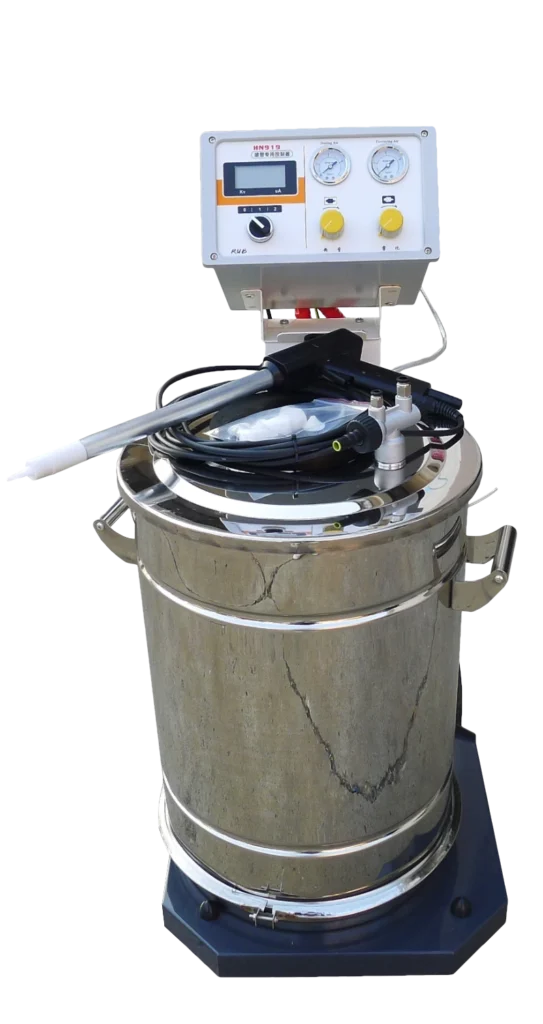
Search for spraying equipment problems you want to know
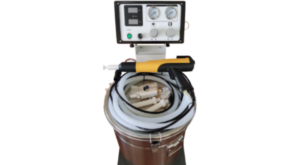
Powder Coating Machine
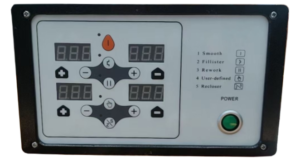
Powder Coating Control Panel
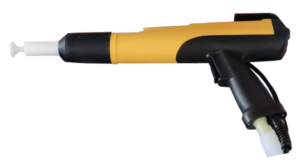
Powder Coating Gun
Why Choose Us
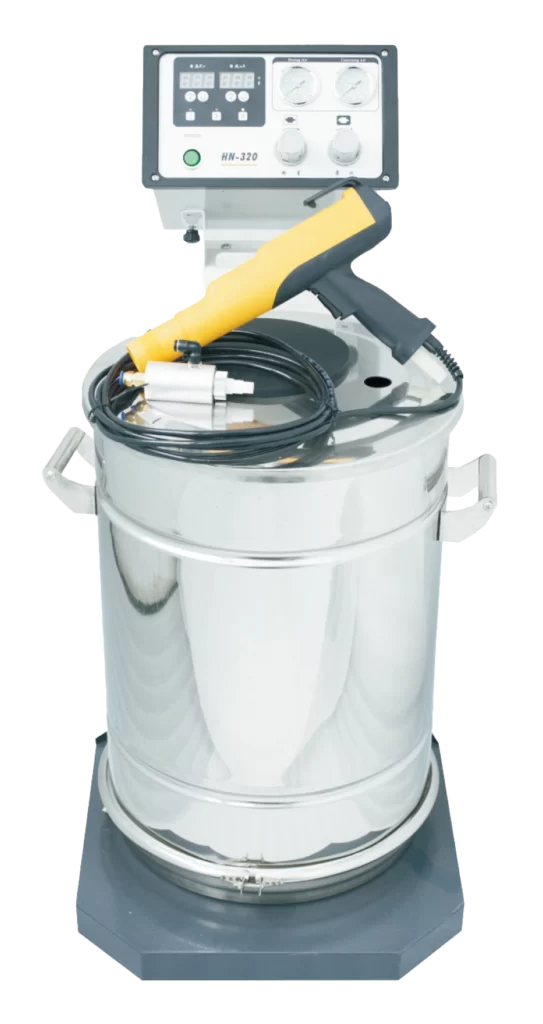
Why We Are Qualified
Our foreign trade started in 2007 and our company was established in 2015.
Adopt Imported Components
All our machines are equipped with imported movements and high voltage modules for efficient and stable performance.
Self-owned Factory
Advanced assembly line and a full set of testing equipment.
Rich experience in the manufacture of ozone generators, flyback transformers and car battery chargers.
Rich Product Types and Online Customization
Satisfy even the most demanding powder coating requirements.
3 operation methods available: Knobs, Buttons and Touch Screen.
Cope with Scams
Use our rich experience to help you avoid the scams in:
Selection of product types
Pricing
Advantage
Paint materials used in powder coating can be either powdered or liquid.
Compared with the conventional liquid coating line, electrostatic powder coating has a much higher work efficiency. Especially for these wooden furniture such as tables and chairs that cannot be shower coated or roller coated, electrostatic powder coating has a larger economic benefit. Curing time is significantly faster with powder coatings compared to liquid coatings especially when using ultraviolet cured powder coatings or advanced low bake thermosetting powders.
When electrostatic powder coating is carried out, negatively charged powder particles will be sprayed onto the surface of the workpiece along the direction of the electric line by the action of electrostatic field. Therefore, basically there will be no rebound or flying off of the powder jet. The loss of the powder is also minimal, and the utilization rate of the powder can reach 85-90% or more. Around 98% of the overspray can be collected for reuse for its better wrap-around.
For the existence of high voltage electrostatic field, the powder particles will be more dispersed and distributed more evenly in the jet stream than conventional coating methods. Therefore, the coating formed on the surface of a workpiece will be more smooth and uniform than conventional coating methods. Both the glossiness and adhesion of the coated film will be higher. It will achieve a thicker, more uniform coating than traditional liquid coating.
The quality of powder coating can be maintained for many years, keeping the color sharp and vivid for long period of time without fading. The painted powder coatings adheres extremely well to the grounded objects as the most durable finish available. Several compounds of can be added to the powder coatings to enhance anti-corrosive and anti-abrasive properties, maintaining the quality of the coating for a longer period.
Powder coated items generally have fewer appearance differences than liquid coated items between horizontally coated surfaces and vertically coated surfaces.
When solvent-based coatings is applied, volatile and toxic compounds (VOC) will be emitted into the air and pollute the atmosphere. It will be toxic both to the improperly protected workers and the environment. Thus, extensive air treatment and exhaust systems will be required to clear the air. Powder coatings contain no solvents and release negligible amount of VOC into the atmosphere. Therefore, there is no need to be concerned about the transportation and handling of solvents, as well as the purchase of the costly pollution control equipment. Companies can comply with the regulations of the US Environmental Protection Agency more easily and economically.
Electrostatic powder coating can satisfy the treatment of workpieces with a variety of colors, finishes, and thickness, which cannot be achieved by conventional liquid coating methods. It can achieve the coating of almost any color. It can be used for both the protection of the surface of the object, but also to achieve a specific decorative effect. The achieved surface effect can be matte, glossy, clear or metallic. Electrostatic powder coating can be used both for decoration and to hide certain surface defects.
Compared with other coating technologies, electrostatic powder coating requires a minimal operator training and supervision. In practice, electrostatic powder coating is usually combined with the conveying device to form a powder coating line. In this case, the operator’s work is limited to only the preparation of the workpiece and the adjustment and control of the spraying equipment. Therefore, the probability of the operator’s direct contact with the powder to be coated will be reduced. Meanwhile, the labor intensity will also be reduced. In addition, the diffusion degree of electrostatic powder coating is much lower than that of conventional pressure coating or non-pressure coating. Therefore, people will be less affected by the powder.
Despite a slightly larger upfront investment, electrostatic powder coating is more durable and cost-effective than conventional powder coating methods in the long run.
Disadvantages:
Powder coatings exist in the form of solid, and they cannot form a coating with its thickness less than 25 um. As for liquid paintings, with the use of paint thinners, the thickness of the coated films can be further reduced to about 10 um.
Electrostatic powder coating equipment and method make it applicable only in a specific powder coating booth. Meanwhile, when being powder coated, substrates must first be charged and then placed in a curing oven at 200 degrees or higher. Considering these factors, electrostatic powder coating cannot be applied to coat and cure large substrates such as ships and large machines.
The curing process of the powder coated workpieces can only be carried out in a curing oven which can provide a high temperature around 200 degrees. Workpieces coated with liquid coatings does not require such a high temperature condition. They can be dried and cured at room temperature.
Due to the need for charging and high temperature curing in an oven, electrostatic powder coating is not suitable for handling non-metallic workpieces.
By using liquid paints, color combination is easy. The color green can be obtained by mixing yellow and blue, while purple can be achieved by mixing red and blue. However, the colors of the powder coatings are fixed once they are made. The mixture of blue and yellow powder materials cannot produce the color green.
Electrostatic powder coating requires a longer lead time due to its more complex processes. For large workpieces, a longer drying and curing time will be required. Considering the electrostatic powder coating guns, a dedicated powder coating booth and a curing oven, electrostatic powder coating requires a higher start-up investment than the conventional liquid coating.
In a powder coating process, fire may occur with the spark discharge caused by improper powder coating distance or improper operation. Therefore, the operator should comply with the operating procedures and prepare reliable fire and explosion protection facilities.
Application Range
You can find electrostatic powder coating widely applied in household appliances manufacturing, building materials production, furniture manufacturing, office equipment manufacturing, car and motorcycle manufacturing, agricultural machinery manufacturing, sports equipment and many other industries. It can be used for the treatment of metal surfaces such as steel, stainless steel and aluminum. It can also be used onto non-metallic materials such as glass, wood, plastic, medium density fiberboard, etc. As long as the material to be coated can withstand the temperature required for melting and curing the powder without melting, deformation or combustion. The following are some of the applications of electrostatic powder coating:
the front and side panels of ranges, refrigerators, washer tops and lids, dryer drums, air conditioner cabinets, water heater, dishwater racks, cavities of microwaves, vending machines, etc.
lawnmowers, snow blowers, barbecue grills, patio furniture, etc.
metal furniture, computer cabinets, mechanical pencils and pens, thumbtacks, and other desk accessories.
aluminum extrusions used on frames for windows, doors, doorknobs and modular furniture, light poles, guardrails, signs, posts, fencing, stadium seating, etc.
surface primer, break components, wheels, bumpers hubcaps, trims, door handles, decorative trim, truck beds, radiators, shock absorbers, oil filters, battery trays, coil springs, and numerous other engine parts.
surface primer, break components, wheels, bumpers hubcaps, trims, door handles, decorative trim, truck beds, radiators, shock absorbers, oil filters, battery trays, coil springs, and numerous other engine parts.
Electrostatic powder coating can provide a colored finish or base coat to extend its lifespan of its outer layer.
Bars and handles of a bus or train are more prone to wear and tear. Electrostatic powder coating can help to protect the color and finish for years.
strollers, cribs, metal toys, wagons, etc.
tractors, harvesters, ATVs, plows, harrows, fertilizer spreaders, seeders, balers, and many other agricultural equipment.
golf shafts, basketball stands, football gates, snowmobiles, bicycles, and other outdoor exercise equipment.
lawn chairs, playground and park equipment, etc.
metal signs providing directions or instructions, electronic housing, lighting fixtures, antennas, electrical components, fire extinguishers, metal shelves, etc.
Powder Coating Process
When electrostatic powder coating is applied for a workpiece, a typical powder coating process can be divided into three stages: preparation, application and curing.
1. Preparation Stage
Any residue on the workpiece surface will affect powder adhesion and final powder coating quality. Before a workpiece is powder coated, it needs to be treated to ensure that there is no dust, dirt or debris. For different materials, the preparation stage may include cleaning, washing, etching, and drying. The cleaning work is usually carried out in a dip tank or a cleaning station. Weak base and neutral detergent, hot water or steam are often used to remove oil, grease, solvent and other residues on the surface of a workpiece. Masking products are required for the parts of a workpiece that do not need to be coated. They are paper or plastic films coated with pressure sensitive adhesive. They can be pasted to the designated location to avoid the contact with the powder.
2. Application Stage
A process called electrostatic spray deposition (ESD) is typically used to achieve the application of the powder coating. Required equipment includes a powder coating gun, a powder feeder, a powder coating spray booth and a power unit selected according to the powder coating gun. In a powder coating spray booth, powder is sprayed onto the workpiece by a powder coating gun.
In addition, powder coating spray booth can also be used as an air filter, powder overspray containment and recovery system. When it works, the fluidized powder material will be distributed from the feeder to the powder coating gun, which is used to transfer electric charge to the powder and then eject the powder. The electrically charged powder will be sprayed onto the electrically grounded surface, and the excessive powder will be collected by a recovery system for future use.
3. Curing Stage
The powder coated workpieces need to be cured in a curing oven. In a curing oven which is 320-450 degrees Fahrenheit, workpieces of different sizes, shapes and thickness need a curing time ranging from 10 minutes to over 1 hour. Larger workpieces require a longer curing time and more heated air than the smaller ones. When the optimum curing temperature is reached, the powder on the surface of the workpieces will melt and flow together, forming a continuous coating. Then, they can then be packaged after a certain period of cooling.
Technical requirements
1. Electrical resistivity of the powder
Electrostatic powder coating requires the powder with a low electrical resistivity, preferably in 5-50 MΩ-cm. For commonly used powder with a high electrical resistivity, appropriate solvents can be added to reduce the value.
2. Wind speed control in the powder spray booth
In order to ensure the safety of the work, an air ventilation system can be used in the powder spray booth to discharge the solvent steam generated in the powder coating process. By doing this, it ensures that the content of the organic solvent is below the LEL (lower explosive limit). But on the contrary, an excessively high wind speed will also affect the normal powder coating process. The indoor wind speed should be controlled between 0.3-0.7m/s, and it will be better that there is a wind speed regulation function in the air ventilation system.



